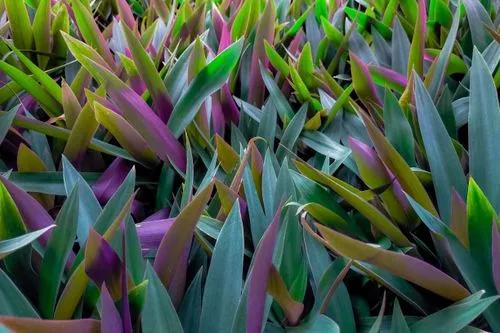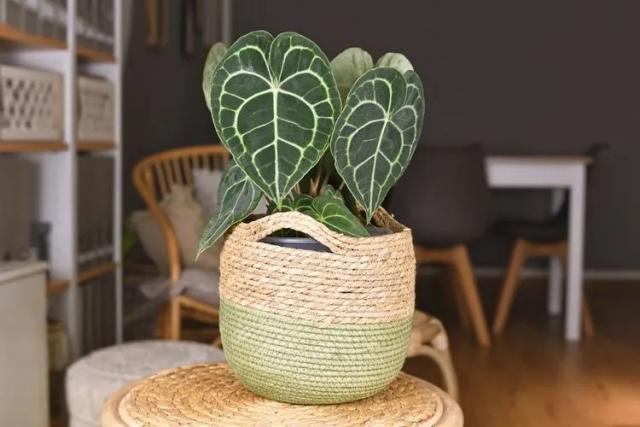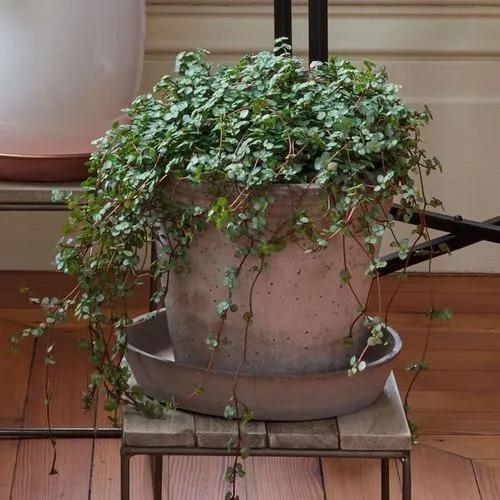Velvet Leaf Philodendron is a stunning evergreen leafy plant coming from tropical rainforests. Its stunning greenish-bronze foliage with reddish-brown undersides has won the hearts of many plant lovers around the world.
Velvet Leaf Philodendron Care
Philodendron Scandens 'micans'



Commonly known as Velvet Leaf Philodendron, Philodendron Micans, and Sweetheart Plant, Philodendron Hederaceum Micans is an evergreen member of the Araceae family. Native to Mexico, Brazil, and the West Indies, this trailing plant typically reaches 8-24 in (20-60 cm) in length. Its heart-shaped foliage is lush green in color with velvety smooth undersides. When mature, the foliage reaches max 3 in (7 cm) in width. The plant does not usually produce blooms if grown indoors.
How to Care for the Plant

Water

As the Sweetheart Plant is a water-loving species, it's recommended to keep the ground consistently moist. Give your greenie a drink when the top inch (2 cm) of soil feels dry to the touch. Make sure not to waterlog the plant, as it can cause root issues. It's also recommended to mist the Philodendron daily or introduce a humidifier close to the plant to make the growing conditions as close to the natural habitat as possible.

Pruning

As a trailing plant, Philodendron Micans has very low pruning needs. However, it's recommended to practice trimming to keep the plant in good health and maintain its shape. Trim the vines that have become leggy with sterile sharp scissors. Also, it's important to remove any yellowing or damaged foliage. Remember to cut under the node.

Fertilizer

Nourish Velvet Leaf Philodendron with well-balanced 10-10-10 NPK fertilizer once a month during the spring-summer growing season. Dilute fertilizer for foliage plants to the half-recommended dose and feed the greenie. Alternatively, use a slow-release fertilizer in spring, and avoid feeding the plant in fall and winter.

Sunlight

This greenie thrives under the combination of sun and shade. It's recommended to expose it to 3-4 hours of direct sunlight in the morning and protect the plant with shade during the hottest hours of the day. An east-facing window would be the best for this greenie.

Soil

Well-draining, nutrient-rich soil would be the most beneficial for this plant. Choose a mildly acidic potting mix with a 5-6.5 pH level. It's also recommended to mix in some sand or perlite to improve drainage.

Propagation

Stem cutting is the quickest and most popular way of propagating the Velvet Leaf Philodendron. Prune a healthy 6-8 in (15-20 cm) long stem under the node. Dip it in the rooting hormone powder and place the cutting in a well-draining potting mix. Keep the stem under indirect light and moisten the ground regularly until the cutting enroots.

Temperature

A mild to warm temperature of 65-85°F (18-29°C) would be the most comfortable for this plant.

Container

Growing Velvet Leaf Philodendron in a pot, it's recommended to choose a 2-3 times bigger container than the plant's roots ball to allow some room for growth. Choose a pot with drainage holes to prevent waterlogging issues. As the plant is a water-loving species, it's recommended to opt for a pot made of plastic or glazed ceramic not to let the moisture evaporate too quickly.

Fun fact

Being a tropical plant, Hederaceum Micans is cherished for its air-purifying properties. It does really well at filtering out pollutants such as formaldehyde, xylene, and benzene.

Popularity

984 people already have this plant 116 people have added this plant to their wishlists

Common pests

This trailing plant often falls victim to aphids, mealybugs, and spider mites. In case you notice any webbing on the foliage or yellowing and curling leaves, treat the plant with insecticidal soap.

Frequent diseases

Fungal pathogens can also cause dark spots or lesions on the foliage. As soon as you notice any disease infection signs, remove and discard the affected foliage and treat the plant with a fungicide.

Botanist’s tips

Discover more plants with the list below
Popular articles






